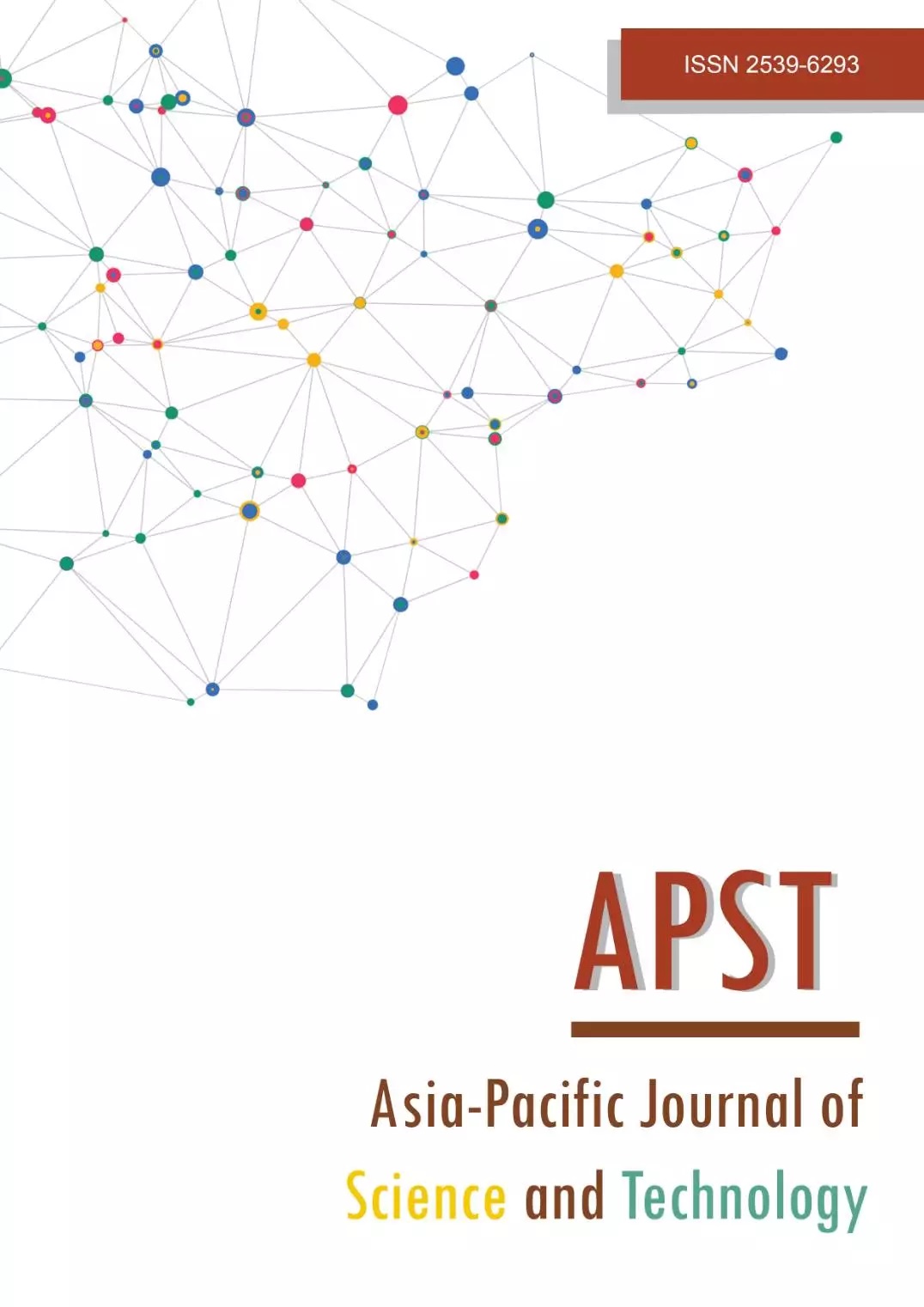Modelling and analysis of new organic thin film temperature sensor
Main Article Content
Abstract
Integration of sensor modules in contemporary smart devices is imperative for initiating automation in the devices. Among such sensors temperature sensors based on conventional inorganic semiconductors are most common. Temperature sensors are generally used in various electronic devices like smart watches, digital thermometers, digital weather stations etc. Integration of inorganic temperature sensor modules in such organic smart devices adds to circuit complexity, inconsistency, increment in fabrication cost and size of the device. In this research article a new flexible organic thin film temperature sensor is proposed that is inspired from the operational functionality of organic thin film transistors. The proposed organic thin film temperature sensor (OTS) is structurally and behaviourally similar to an organic thin film transistor (OTFT). A comparative analysis of OTS with single gate and dual gate OTFT structures using modelling and simulation is performed to validate its functionality and determine its operational efficiency across different performance parameters. The OTS is found to generate 167% and 17% more drain current then single gate and double gate (DG) OTFTs respectively with same material composition, and voltage regime. Also, OTS has 31% higher temperature sensitivity compared to double gate OTFTs. It will eliminate the need of additional circuit components required to make contemporary inorganic temperature sensors functional with smart organic electronic devices. Hence the proposed OTS being dimensionally and functionally equivalent to a single OTFT could replace the conventional inorganic semiconductor-based temperature sensors to achieve fabrication compatibility and size optimization in modern organic electronic devices.
Article Details

This work is licensed under a Creative Commons Attribution-NonCommercial-NoDerivatives 4.0 International License.
References
Polena J, Afzal D, Ngai JHL, Li Y. Temperature sensors based on organic field-effect transistors. Chemosensors. 2022;10(1):12.
Mansoor M, Haneef I, Akhtar S, De Luca A, Udrea F. Silicon diode temperature sensors-a review of applications. Sens Actuator A Phys. 2015;232:63-74.
Childs PRN, Greenwood JR, Long CA. Review of temperature measurement. Rev Sci Instrum. 2000;71(8):2959-2978.
Michalski L, Eckersdorf K, Kucharski JM. Temperature measurement. 2nd ed. Hoboken, New Jersey: Wiley; 2001.
McGee. TD. Principles and methods of temperature measurement. 1st ed. New Jersey: Wiley; 1988.
Altet J, Claeys W, Dilhaire S, Rubio A. Dynamic surface temperature measurements in ICs. Proc IEEE. 2006;94(8):1519-1532.
Blackburn DL. Temperature measurements of semiconductor devices - a review. Annu IEEE Semicond Therm Meas Manag Symp. 2004;20:70-80.
Yusof NS, Mohamed MFP, Ghazali NA, Khan MFAJ, Shaari S, Mohtar MN. Evolution of solution-based organic thin-film transistor for healthcare monitoring-from device to circuit integration: a review. Alexandria Eng J. 2022;61(12):11405-11431.
Elkington D, Cooling N, Belcher W, Dastoor P, Zhou X. Organic thin-film transistor (OTFT)-based sensors. Electronics. 2014;3(2):234-524.
Inal S, Malliaras GG, Rivnay J. Benchmarking organic mixed conductors for transistors. Nat Commun. 2017;8(1):1767.
Lee MY, Lee HR, Park CH, Han SG, Oh JH. Organic transistor-based chemical sensors for wearable bioelectronics. Acc Chem Res. 2018;51(11):2829-2838.
Wang N, Yang A, Fu Y, Li Y, Yan F. Functionalized organic thin film transistors for biosensing. Acc Chem Res. 2019;52(2):277-287.
Fang X, Zong B, Mao S. Metal-organic framework-based sensors for environmental contaminant sensing. Nano-Micro Lett. 2018;10(4):64.
SILVACO International. Silvaco User’s Manual [Internet]. 2004 [cited 2022 Jun 12]. Available from: https://www.eng.buffalo.edu/~wie/silvaco/atlas_user_manual.pdf.
Horowitz G. Organic field-effect transistors. Adv Mater. 1998;10(5):365-377.
Kaushik BK, Kumar B, Prajapati S, Mittal P. Organic thin-film transistor applications. 1st ed. Florida: CRC Press; 2016.
Kumar B, Kaushik BK, Negi YS. Organic thin film transistors: structures, models, materials, fabrication, and applications: a review. Polym Rev. 2014;54(1):33-111.
Kalb WL, Mathis T, Haas S, Stassen AF, Batlogg B. Organic small molecule field-effect transistors with CytopTM gate dielectric: eliminating gate bias stress effects. Appl Phys Lett. 2007;90(9):092104.
Natali D, Caironi M. Charge injection in solution-processed organic field-effect transistors: physics, models and characterization methods. Adv Mater. 2012;24(11):1357-1387.
Guo X, Xu Y, Ogier S, Ng TN, Caironi M, Perinot A, et al. Current status and opportunities of organic thin-film transistor technologies. IEEE Trans Electron Devices. 2017;64(5):1906-1921.
Shim CH, Maruoka F, Hattori R. Structural analysis on organic thin-film transistor with device simulation. IEEE Trans Electron Devices. 2010;57(1):195-200.
Shao M, He Y, Hong K, Rouleau CM, Geohegan DB, Xiao K. A water-soluble polythiophene for organic field-effect transistors. Polym Chem. 2013;4(20):5270.
Wang BB, Zhu K, Feng J, Wu JY, Shao RW, Zheng K, et al. Low-pressure thermal chemical vapour deposition of molybdenum oxide nanorods. J Alloys Compd. 2016;661:66-71.


